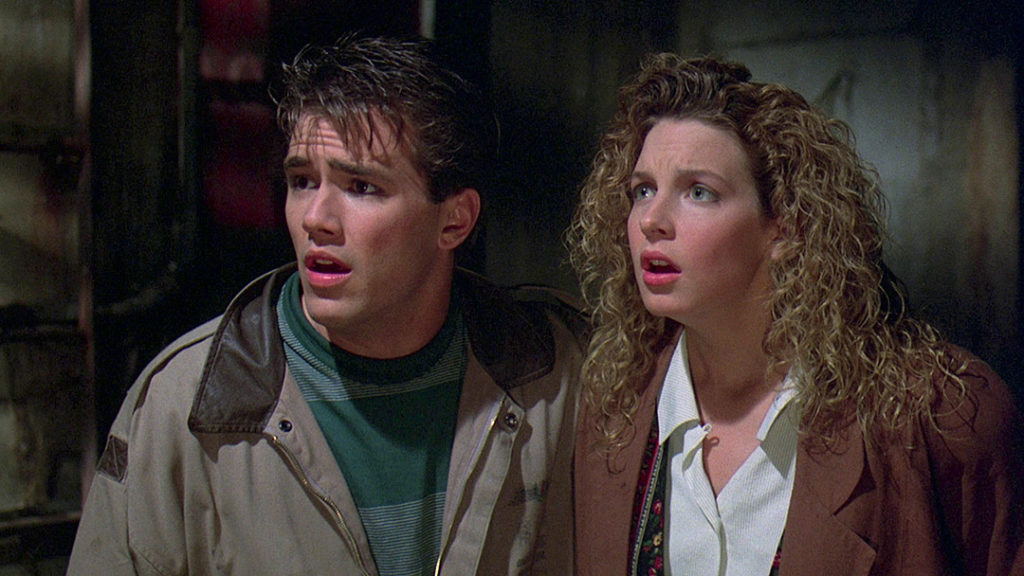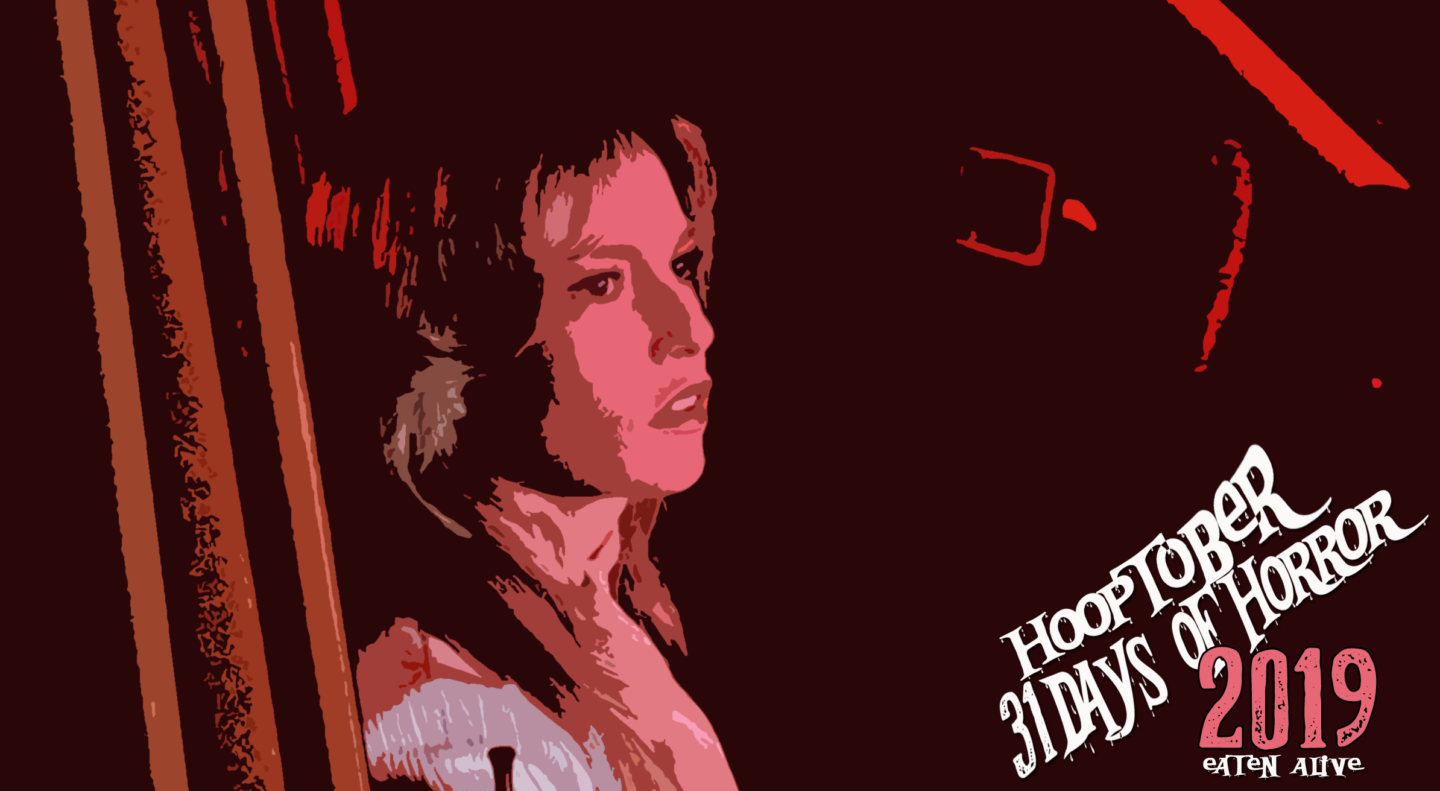#14. Friday the 13th Part VIII (1989)
 Nature of Shame:
Nature of Shame:
YET ANOTHER UNSEEN FRIDAY THE 13TH.
Hooptober Challenge Checklist:
Decade: 1980’s
#Watch1989
AT LAST. I’ve reached my goal. I had to watch through Part VIII to satisfy my personal requirements for my #Watch1989 marathon. (Thanks, DVD Netflix, for fueling this madness.) Huzzah. Calling this a pyrrhic victory would be generous. I spent 20 minutes at a bar struggling to differentiate between all 8 Friday the 13th movies. I had to rewind for some do-overs, but I hit my stride after the second pint of Imperial Stout.

‘Friday the 13th Part VIII – Jason Takes Manhattan’ Elevator Pitch
Right — lovely. So based on the title, Jason’s unleashed in Manhattan. What a wonderful premise! I can’t wait to hear more.
Noooooo, no no no. Wait. This is even better. Jason’s stuck on board a high school party river cruise. Fish in a barrel!
Wait. So he’s not in New York City?
Not until the very end! But trust me on this river cruise thing. It’ll be perfect. Die Hard on a river cruise! Except not Die Hard, but Friday the 13th!
Tell me one thing. Does Jason at least maul a boombox blasting rap music once he’s in New York City?
You know it!

‘Jason Takes a Party Cruise’ Doesn’t Have the Same Ring To It
But then again, maybe “Jason Takes a Party Cruise” would have been appropriately reflective of how little Jason actually “takes” because it’s definitely not Manhattan. It also speaks to the dearth of creativity found in this eighth entry in the series. While I’m no apologist, I also can’t abide the critics who lament a rapid and steady decline of Friday the 13th from its glorious heights.
First of all, what glorious heights? And second of all, the original wasn’t well made nor was it all that entertaining. You want a solid slasher flick? Try Part II. If you want wild and entertaining, try Part VI. You want trashtastic? Part VII‘s got your number. If you’re a masochist, I recommend Part V.
If you’re looking at this series as a steady decline, you’re not actually watching the movies.
Reverting back to tired old teenage “types” and putting them aboard a party cruise for Jason to pick off one by one isn’t a bad premise. It at least tries to push the series beyond Crystal Lake. (If you’re a camper or vacationer aren’t you steering clear of that place by now?) Friday the 13th Part VIII seems content to go through the motions in the new and shiny locale that serves as a stand-in for invention.

The teenagers have no personality. Jason does Jason things. Worst of all, director Rob Heddon seems perfectly content to invoke a Freddy Krueger brand of illusionary, red herring dreamscape terror. Our “final girl” sees visions of young Jason around every corner. Heddon’s trying to humanize our inhuman evil, but it rings false because he does so in a way that invokes A Nightmare on Elm Street and concedes that Jason’s run out of momentum.

Final ‘Friday the 13th Part VIII’ Thoughts
By the time Jason actually makes it to Manhattan, there’s no saving this movie. We’re only treated to this one image that hints at the promise of a movie called Jason Takes Manhattan. There’s no tension, no thrills, and no surprises. It’s a 100-minute slog that wears out its welcome after the first 30 and Jason doesn’t even sniff the ripe garbage of New York City until the one-hour mark.

 Friday the 13th Part VIII is available on Blu-ray and DVD.
Friday the 13th Part VIII is available on Blu-ray and DVD.
2019 @CinemaShame / #Hooptober Progress
#1. Shocker (1989) // #2. Etoile (1989) // #3. The Phantom of the Opera (1989) // #4. Blacula (1972) // #5. Scream Blacula Scream (1973) // #6. Jaws: The Revenge (1987) // #7. Blood Bath (1966) // #8. Friday the 13th Part V (1985) // #9. Friday the 13th Part VI (1986) // #10. Friday the 13th Part VII (1988) // #11. Dracula: Prince of Darkness (1966) // #12. Pet Sematary (1989) // #13. Eaten Alive (1976) // #14. Friday the 13th Part VIII (1989)
James David Patrick is a writer. He’s written just about everything at some point or another. Add whatever this is to that list. Follow his blog at www.thirtyhertzrumble.com and find him on Twitter, Instagram, and Facebook.
Disclaimer: I earn rewards from DVD.Netflix.com, which has thousands of movies to choose from, many that you won’t find on streaming services. I do this because the availability of physical media is important. The popular streaming notion of “everything available all the time” is a myth. We are always our own best curators. #PhysicalMedia #DVDNation #ad







 Nature of Shame:
Nature of Shame:




